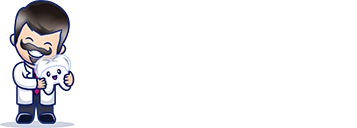Starting your Invisalign journey is an exciting step toward achieving your dream smile. However, success with clear aligners depends on more than just wearing them – it requires proper preparation, diligent care during treatment, and commitment to post-treatment maintenance. This comprehensive guide provides essential tips for your Invisalign journey, walking you through each phase of the treatment timeline.
Before Your Invisalign Treatment Begins
Your Invisalign journey actually starts long before you receive your first set of aligners. The preparation phase is crucial for ensuring smooth treatment and optimal results.
Finding the Right Provider
The first step in your journey involves researching qualified Invisalign providers in your area. Look for orthodontists or dentists with extensive experience in clear aligner therapy. Patient reviews, before-and-after photos, and provider credentials can help guide your decision. Many practices offer free consultations, allowing you to meet the team and assess whether they’re the right fit for your needs.
During your initial consultation, come prepared with questions about the treatment process, timeline, and costs. Bring any previous dental records, photos of your smile from different angles, and your insurance information. This preparation helps your provider create the most accurate treatment plan and gives you a clear understanding of what to expect.
Preparing Your Oral Health
Before beginning Invisalign treatment, your mouth needs to be in optimal health. This means addressing any existing dental issues such as cavities, gum disease, or necessary extractions. Many patients require a professional cleaning to remove plaque and tartar buildup. If you have wisdom teeth that could interfere with treatment, your provider may recommend extraction before starting.
Setting realistic expectations is another crucial aspect of preparation. Your provider should explain what Invisalign can achieve for your specific case, the estimated treatment duration, and any potential limitations. Understanding these factors helps prevent disappointment and ensures you’re fully committed to the process.
Getting Ready at Home
As your treatment start date approaches, prepare your home with necessary supplies. You’ll need travel cases for your aligners, cleaning solutions such as denture tablets or specialized Invisalign cleaning crystals, and a soft toothbrush dedicated to aligner care. Stock up on orthodontic wax for managing any initial discomfort, and have over-the-counter pain relievers ready for the adjustment period.
During Your Invisalign Treatment
The active treatment phase requires dedication and proper care techniques to achieve the best results. Understanding what to expect and how to manage your aligners will make your journey smoother and more successful.
The First Week Experience
Your first few days with Invisalign aligners involve the most significant adjustment. Expect mild discomfort as your teeth begin shifting into new positions. This pressure sensation is normal and indicates that the treatment is working. Many patients experience a slight lisp initially, but this typically resolves within a few days as your tongue adapts to the aligners.
During this adjustment period, stick to soft foods and take pain relievers as needed. Practice speaking while wearing your aligners to adjust to any speech changes faster. Most importantly, establish a consistent routine for wearing and caring for your aligners from day one.
Developing Your Daily Routine
Success with Invisalign depends heavily on maintaining proper hygiene and wear time. Each morning, remove your aligners and rinse them with cool water before brushing and flossing your teeth thoroughly. Clean your aligners with a soft toothbrush and clear, unscented soap, then rinse well before reinserting them.
Throughout the day, remove your aligners before eating or drinking anything except water. After meals, rinse your mouth or brush if possible before putting your aligners back in. This prevents food particles and bacteria from becoming trapped against your teeth. In the evening, soak your aligners in a cleaning solution while performing your nighttime oral hygiene routine.
Remember to wear your aligners for 20-22 hours daily as prescribed. This consistent wear time is crucial for staying on track with your treatment plan. Many patients find it helpful to use a smartphone app or timer to track their daily wear time.
Managing Common Challenges
Throughout your treatment, you’ll likely encounter various challenges that require creative solutions. When switching to new aligners, expect some discomfort for the first day or two. Many patients find it helpful to switch to new aligners before bed, allowing them to sleep through the initial adjustment period.
Maintaining oral hygiene while out and about can be challenging. Carry a travel toothbrush and toothpaste, along with your aligner case, wherever you go. For situations where brushing isn’t possible, at a minimum, rinse your mouth with water before putting your aligners back in.
Social situations may require some planning. Consider timing your meals around events to minimize the time your aligners are out. Practice discreet removal and insertion techniques, and always use your case rather than wrapping aligners in napkins, which often leads to accidental disposal.
Using Additional Treatment Elements
Depending on your specific needs, your provider may incorporate additional tools to enhance your treatment. Attachments are small, tooth-colored buttons bonded to certain teeth that help aligners grip more effectively for complex movements. These require extra attention during cleaning but are virtually invisible to others.
Some patients need to wear rubber bands (elastics) to correct bite issues. These connect upper and lower teeth and must be worn exactly as prescribed for optimal results. Replace them daily or as directed by your provider.
Your treatment may also include IPR (interproximal reduction), a gentle filing procedure that creates small spaces between teeth. This is performed by your provider at specific points in your treatment to help achieve ideal tooth positioning.
Monitoring Your Progress
Stay motivated by actively tracking your treatment progress. Taking weekly photos from the same angles lets you track subtle changes you might not notice day to day. Attend all scheduled check-ups with your provider, as these appointments allow for progress assessment and any necessary adjustments to your treatment plan.
Don’t hesitate to contact your provider if you experience any concerns or unusual symptoms. Early intervention can prevent minor issues from becoming major setbacks in your treatment timeline.
Once you’ve completed your final aligner tray, the focus shifts from active tooth movement to maintaining your results.
After Your Invisalign Treatment
Completing your active Invisalign treatment is a significant milestone, but the journey doesn’t end there. The retention phase is equally important for maintaining your beautiful new smile.
Transitioning to Retainers
Once your teeth have reached their desired positions, your provider will take new impressions or digital scans to create custom retainers. These devices prevent your teeth from shifting back to their original positions. Options include clear Vivera retainers made by Invisalign, traditional Hawley retainers with wires, or fixed retainers bonded behind your teeth.
Initially, you’ll wear your retainers as much as you wear your aligners – typically 20-22 hours daily for the first three to six months. Your provider will then gradually reduce the wear time, often transitioning to nighttime-only use. However, plan to wear retainers indefinitely to protect your investment in your smile.
Long-Term Smile Maintenance
Maintaining your results requires an ongoing commitment to oral health. Continue brushing twice daily with fluoride toothpaste and flossing regularly. Schedule professional cleanings every six months and annual check-ups with your orthodontist to monitor your retention.
Watch for signs that may require professional attention, such as noticeable tooth shifting despite retainer wear, ill-fitting retainers, changes in your bite, or persistent jaw discomfort. For example, if your retainer no longer fits snugly, or you notice a small gap forming between your front teeth, contact your provider immediately. Address these issues promptly to prevent more significant problems.
Replace your retainers every one to three years, or sooner if they become damaged or warped. Keep a backup set if possible, and always bring your retainers when traveling to avoid interruptions in your retention schedule.
Essential Tips for Invisalign Journey Success
Throughout your entire Invisalign experience, certain principles remain constant. Compliance is perhaps the most critical factor – wearing your aligners for the recommended time and changing them on schedule directly impacts your results. Never skip ahead to the next set early, as this can compromise your treatment outcome.
Make necessary lifestyle adjustments to support your treatment. Always remove aligners before consuming anything except water, and maintain excellent oral hygiene to prevent cavities and gum disease during treatment. Stay hydrated and be mindful of beverages that could stain your aligners or teeth.
Prepare for unexpected situations by keeping previous aligner sets as backups and knowing how to handle lost or damaged aligners. Have your provider’s emergency contact information readily available and understand when immediate care is necessary.
Financial Planning for Your Treatment
Understanding the financial aspects of Invisalign helps you make the most of your investment. Verify your insurance coverage before starting treatment, including any lifetime maximums or age restrictions. Many plans offer orthodontic benefits that can significantly reduce your out-of-pocket costs.
Explore various payment options such as in-office payment plans, third-party financing, or using Health Savings Account (HSA) or Flexible Spending Account (FSA) funds. Some practices offer cash discounts or promotional pricing during certain times of the year.
Keep all receipts and documentation for tax purposes, as orthodontic treatment may qualify as a medical expense deduction in some cases.
Conclusion
Your Invisalign journey represents a significant investment in your oral health and confidence. By following these comprehensive tips for your Invisalign journey through each phase of treatment, you’ll maximize your chances of achieving the beautiful, healthy smile you desire.
Success with Invisalign requires dedication, proper care, and open communication with your provider. From the initial consultation through lifetime retention, each step plays a crucial role in your treatment outcome. Stay committed to the process, maintain excellent oral hygiene, and don’t hesitate to reach out to your orthodontic team with any concerns.
The effort you invest in today will reward you with improved oral health, enhanced self-esteem, and the smile you’ve always wanted. With proper preparation, diligent care during treatment, and commitment to post-treatment maintenance, your Invisalign journey will lead to a lifetime of confident smiles.
Ready to Transform Your Smile?
Your path to a confident, radiant smile begins today. At Dahar Orthodontics, we’re committed to guiding you through every phase of your Invisalign treatment with personalized care and expertise.
Take the first step toward the smile you’ve always wanted. Schedule your free consultation now and discover how Invisalign can work for you.




